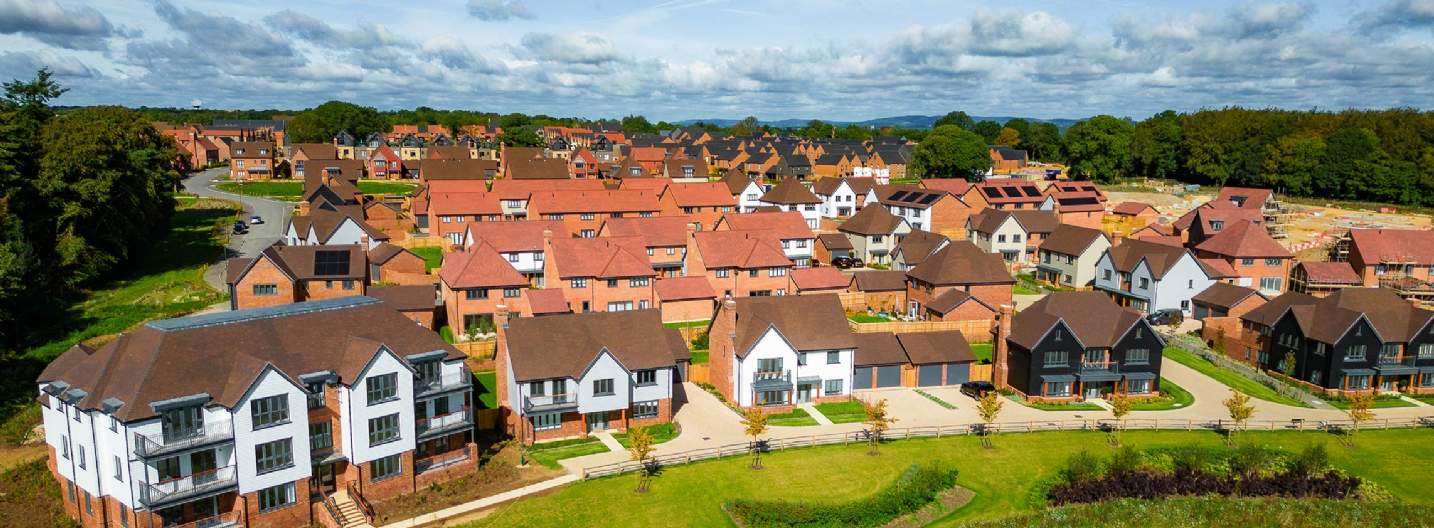Affordable housing supply faces a significant slowdown as mounting pressures start to bite. Policy needs to respond urgently to address this slowdown.
Despite the mounting pressures facing affordable housing providers in recent years, the number of new affordable homes being built in England has steadily increased. Completions reached an eight-year high in the 12 months to March 2023, with c.58,000 new affordable homes delivered.
Early indicators suggest the delivery of affordable homes for 2023–24 will be almost as much, supported by an increase in Housing Associations deploying grant to buy homes intended for private sale. However, beyond 2024, the outlook for affordable housing supply is much more challenging.
Changing direction of travel
Under the previous Government, the delivery of affordable housing steadily increased whilst the overall mix of affordable housing tenures remained fairly stable. Delivery through Section 106 (S106) has consistently been the single largest method of delivering affordable housing since 2015–16, accounting for roughly half of total new affordable housing completions. Policy has focused on the delivery of less grant intensive tenures such as Affordable Home Ownership (AHO) (mostly Shared Ownership) and Affordable Rent. This has been at the expense of grant funding for Social Rented homes, leading to the lowest levels of real-terms grant funding since before 1992.
A very weak outlook for affordable housing supply
We are now facing a serious downturn in the supply of new affordable homes. Affordable housing delivery peaked in 2022–23, with early indicators showing that this slowdown has already begun. Quarterly construction data from the National House Building Council (NHBC) shows that construction starts in the alternative sector (predominantly affordable housing) have fallen by just over a third in the 12 months to September 2024 compared with the same period in 2023. Similarly, in February 2024, the G15 group of London-based Housing Associations issued a warning to the Government that starts by its members were down by 76% in London in 2023–24 compared to the previous year, and down by 37% outside of London.
Caution ahead
Inflation, higher costs of finance and a slowdown in the wider housing market, alongside changes in policy in recent years have all made it more difficult for providers of affordable housing to develop new homes, contributing to this slowdown in affordable housing supply.
Firstly, inflation has taken a considerable toll. Due to rising inflation and the cost of living crisis, the Government mandated caps to rent increases in 2023 to support tenants. But below inflation rent increases have left affordable housing providers struggling to cover the costs of their existing homes, significantly constraining their financial capacity.
Rising inflation has had a significant effect on Government funding for new homes too. The 2021–26 Affordable Homes Programme, the largest investment in affordable homes in over a decade, has been whittled away by rising construction costs and a lack of financial capacity within the sector. From an initial target of 180,000 new affordable homes, this has now shrunk to between 110,000–130,000, with grant funding covering the cost of fewer and fewer homes.
Affordable housing delivery peaked in 2022-23 with early indicators showing that a slowdown in supply has already begun
Lydia McLaren, Associate Director, Residential Research
Alongside this, there has also been a reduction in the number of affordable homes delivered by private developers as part of their S106 obligations. An even more pressing concern is that once built, developers are struggling to find buyers for S106 homes. With Housing Associations now having to spend a growing share of their already-constrained budgets on improvements to existing homes, there is significantly reduced capacity to fund new development or acquire S106 homes, as reported in our recent paper.
How can policy urgently respond to this slowdown?
1. Restoring financial capacity
- Confirmation of a long-term rent settlement would provide Housing Associations with greater certainty around future rental income. Recent Savills analysis has found there is both the need and capacity to increase general needs rents at CPI +1% over the next ten years, whilst maintaining a discount to private rents.
- A new Affordable Homes Programme from 2026 would also support the rebuilding of financial capacity. Expanded grant funding to support new housebuilding and support improvements to existing homes. Further details around the new programme are not expected to be announced until spring 2025.
2. A clear direction for planning policy
- Planning policy and guidance looks likely to continue to emphasise the need for Social Rent over other tenures. Recently proposed changes to the NPPF would remove the requirements for 10% of homes on major sites to be for AHO and for at least 25% of affordable housing units secured through developer contributions to be First Homes.
- Without considerable uplift in grant, it will be very challenging to deliver as many or more affordable homes if the proportion of delivery as Social Rent continues to increase.
3. Devolution of funding and decision making
- Planning authorities and mayoral authorities should have greater power to decide whether affordable homes should be offered for rent or for ownership, and at what level of discount. Our research highlights the role intermediate housing can play in supporting the delivery of affordable homes and helping to address the housing crisis.
Read the articles within Spotlight: Beyond a one size fits all housing policy below.


